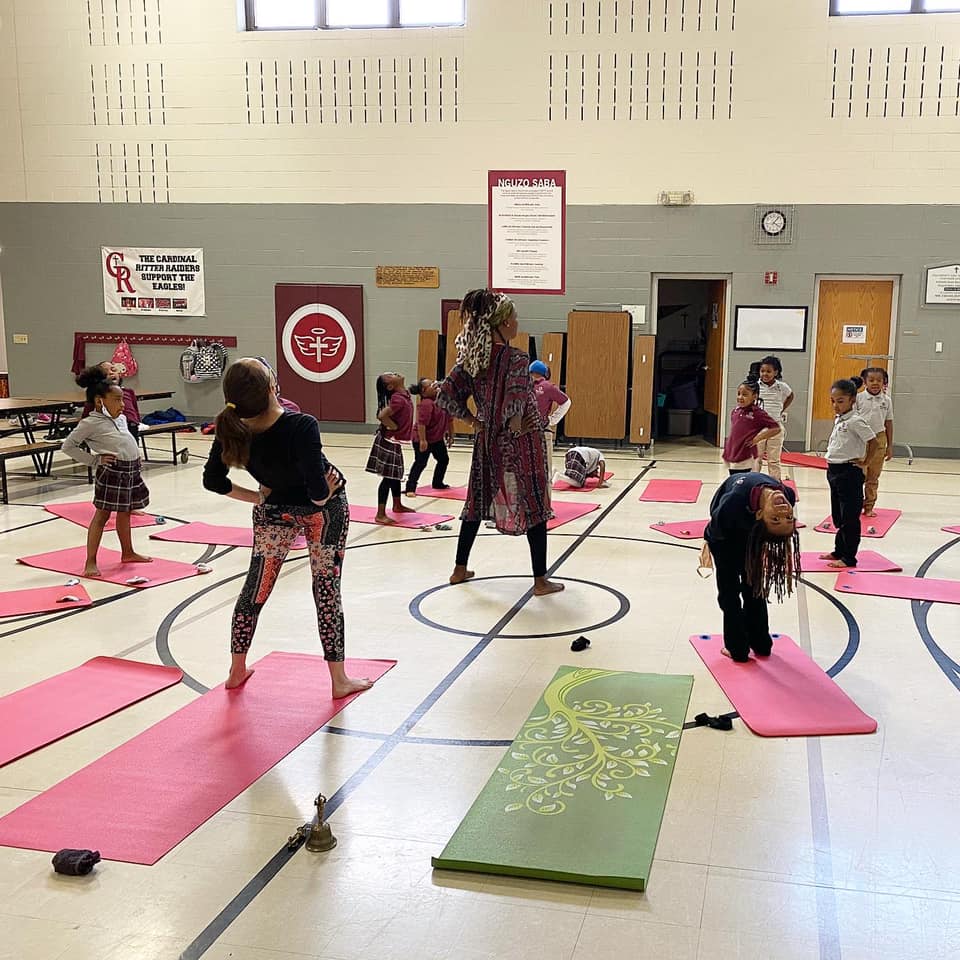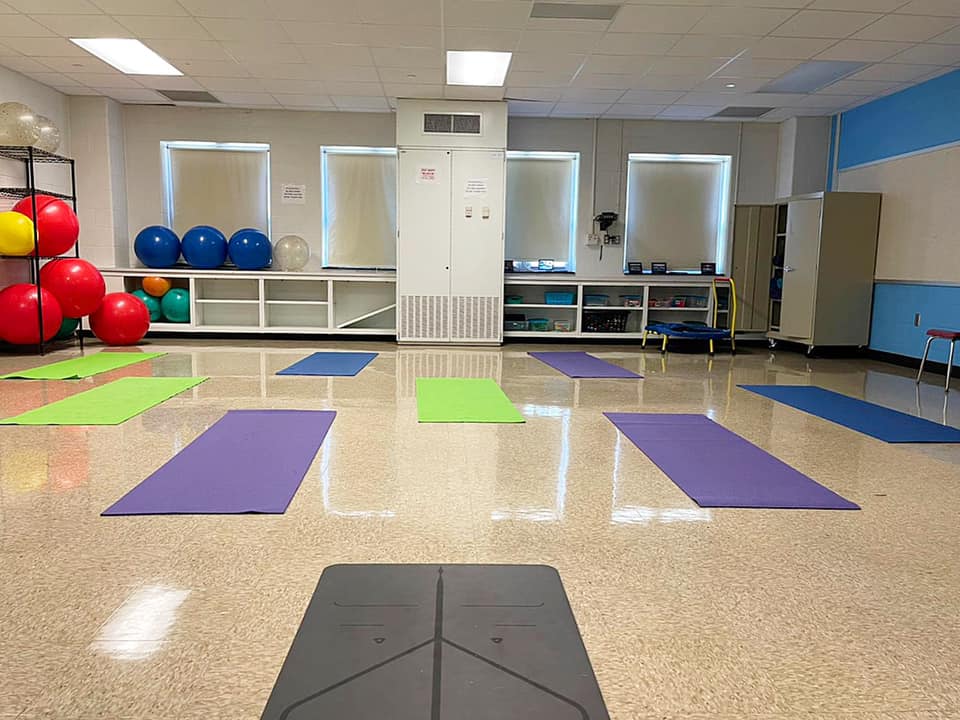When a parent looks at the child struggling in school, the first solution that comes to mind probably isn’t yoga. The approach is more likely increased studying, loss of privileges and hiring tutors. However, Indy Yoga Movement has found that time spent on a yoga mat can have a profound impact on a child’s mind.

More than a decade ago, Warren Central High School was facing decreasing graduation rates. With the help of public funding, they were able to bring yoga programming through Indy Yoga Movement into the school for all the students, and immediately saw positive results.
Purvi Lippincott, chief operating officer and board member of Indy Yoga Movement, explains that while yoga might be a physical activity, it is a mental one, as well. “Yoga is tangible — it’s moving our body, our instrument,” she says. “Initially, [the students] focus on moving their body and paying attention. But overtime, they begin to soften and learn to settle.” Ultimately, the practice teaches the students to manage stress and anxiety, to work through discomfort and self-regulate.
After that first program, Indy Yoga Movement’s involvement in local schools has grown to serving more than 17,000 children, and this year are working with 12 schools and organizations. By going to the children in the schools, as opposed to opening yoga studios to the children, barriers that may prevent participation have been removed. Lippincott explained often the children who benefit the greatest from yoga are the ones who never would have had access previously. Students participate in the program through their weekly physical educational class for a minimum of eight weeks.

Elementary through high schools are seeing positive results, not just academically, but behaviorally as well. They are reporting greater community benefits, with 96% of students reporting they are kinder toward others. “Self-awareness builds communal awareness,” Lippincott says. “We get [the students] to pay attention to themselves, and to view themselves as a worthy part of the equation; that bleeds into other areas.”
In general, the results for elementary children and high school are similar; however, older students might apply their yoga principles with intentionality, while a younger student might use breathing techniques unknowingly to work through a difficult situation.
Classes are led by certified yoga instructors, following a prescribed curriculum designed specifically for the needs of the children. Lippincott enjoys her time with the students, but says it can be challenging as an instructor. “Trying to get the students to participate can be complicated,” she says. “There can be a resistance to the materials and a self-consciousness to participate due to school culture.”
Through the consistency of the program and the broad application across the school, the instructors guide the students through that resistance. “You have to be so patient in a classroom. The students are still figuring so much out all at once, and I have learned to be gracious with them,” Lippincott says.

Most importantly, participation is absolutely free of charge to the students. Schools may receive funding through grants, pay from their own budgets, or apply for scholarships through Indy Yoga Movement. Community members can support this programing by volunteering with Indy Yoga Movement or participating in the annual Gratitude Gala or Monumental Yoga, which are open to adults or donate at indyyoga.org.
“Our end goal is to make Indiana a kinder place, an inclusive place, a place where people can be comfortable with who they are,” says Suzy Bindley, president and co-founder of Indy Yoga Movement.







